For the opportunity to review lens Canon EF 75-300mm f / 4.0-5.6 III Many thanks to Vitaliy Kukota.
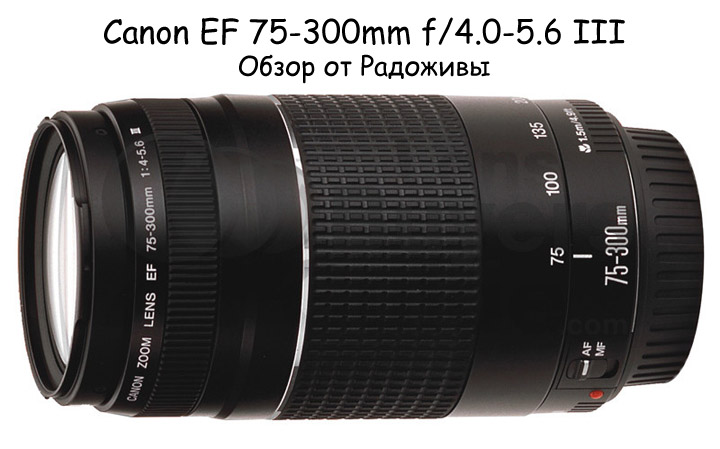
Canon EF 75-300mm f / 4.0-5.6 III review
TTX Canon Zoom LENS EF 75-300mm 1: 4.0-5.6 III
Focal length: 75-300 mm
Diaphragm: f/4.0@75mm, f/5.6@300mm to f/32.0@75mm, f / 45 @ 300mm
Minimum Focus Distance: 1.5 meters
Optical design: 13 elements in 9 groups
Number of aperture blades: 7 pieces
Front Filter Diameter: 58mm
The weight: 480 g
Bayonet mount: EF (Full Fame, APS-H), EF-S (APS-C)
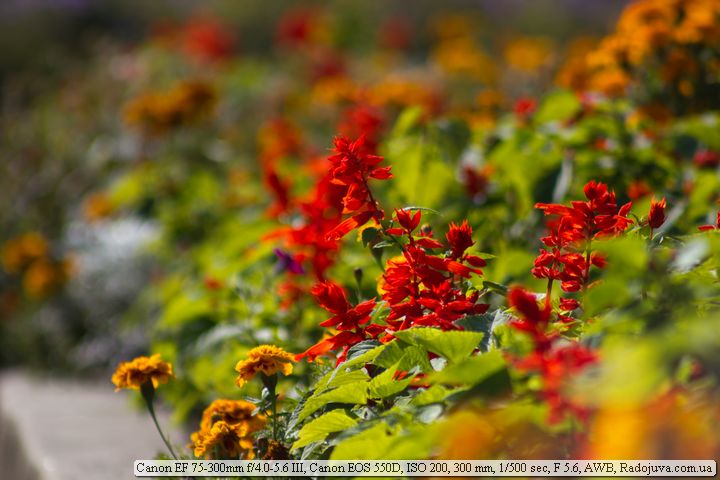
Photo on Canon EF 75-300mm f / 4.0-5.6 III
There are also lens options Canon EF 75-300mm f / 4.0-5.6 IS USM with image stabilizer and ultrasonic motor and Canon EF 75-300mm f / 4.0-5.6 III USM with an ultrasonic motor.
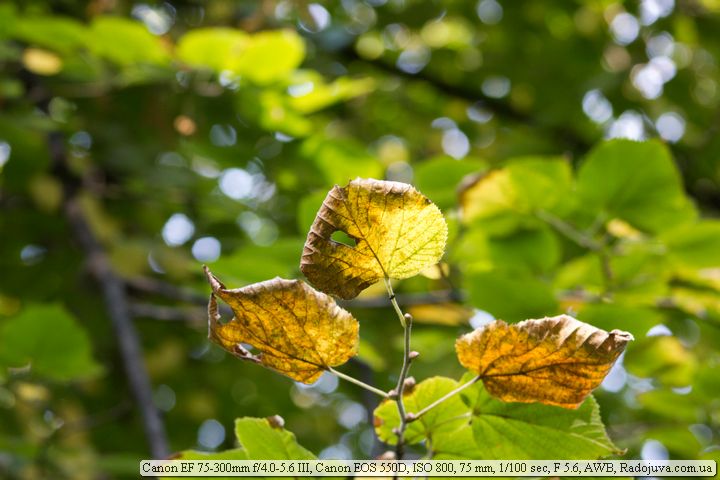
Example photo on a Canon EF 75-300mm f / 4.0-5.6 III
Focusing
The lens has an average auto focus speed. On the Canon EF 75-300mm f / 4.0-5.6 III there is a focus mode switch; in manual focus mode, the focus ring rotates approximately 90 degrees.
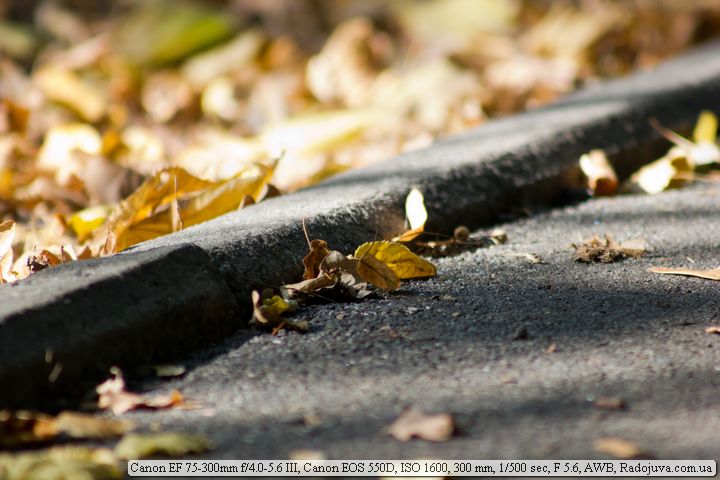
Example photo on a Canon EF 75-300mm f / 4.0-5.6 III
The lens can’t boast good. aperture. True, Canon EF 75-300mm f / 4.0-5.6 III can close aperture up to f / 45.
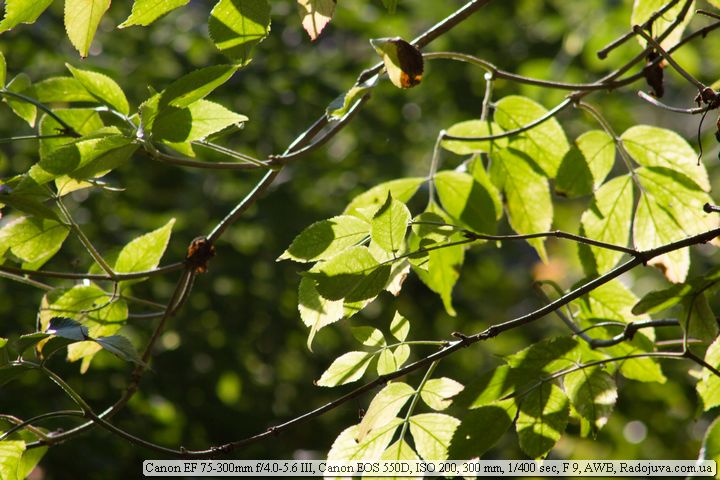
Example photo on a Canon EF 75-300mm f / 4.0-5.6 III
Weight Management
The lens is not heavy, the zoom and focus ring is pretty nice. The diameter of the front filter is not large, only 58mm, like a whale lens. I recommend using protective filter along with the lens.
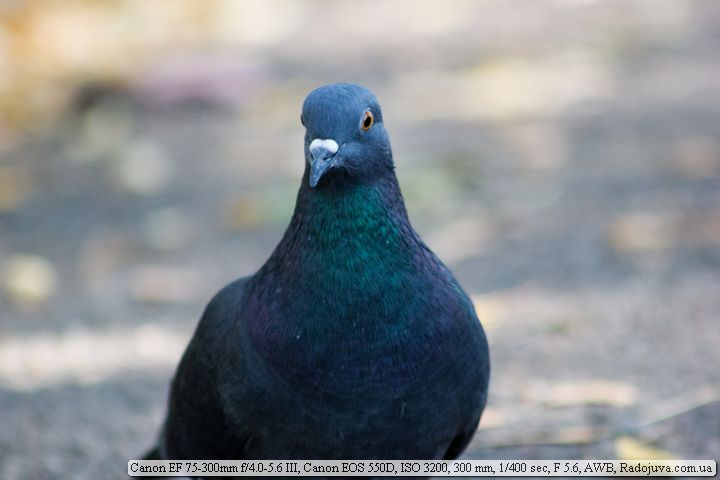
Example photo on a Canon EF 75-300mm f / 4.0-5.6 III
Image quality
The lens showed not very good image quality. Canon EF 75-300mm f / 4.0-5.6 III suffers from aberrations. Holds back light normally. The image sharpness is not very good. Bokeh, a subjective factor, I didn't like it.
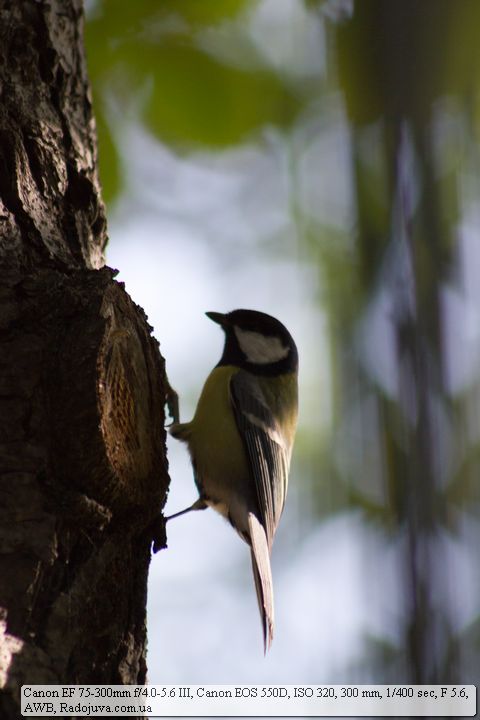
Example photo on a Canon EF 75-300mm f / 4.0-5.6 III
More examples of photos on this lens for Radozhiva kindly provided Alexander Frolov.
Personal experience
This is a rather dark telephoto, it cannot boast of anything interesting, except for its low price. It's too bad that when used on cropped cameras, the lens doesn't have an Image Stabilizer. At full frame, the Canon EF 75-300mm f / 4.0-5.6 III is more user-friendly due to its wider field of view than crop and better ISO values, which allow for faster shutter speeds and thus less shake. If you are going to buy this lens, then you need to know about handheld photography basics.
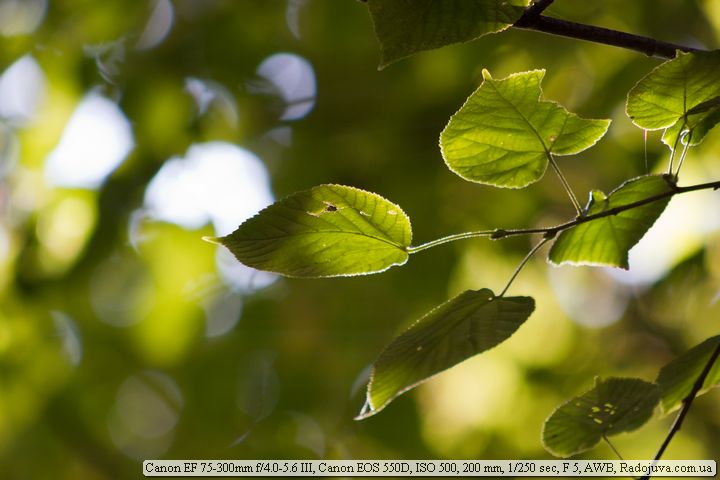
Sample photo on a Canon EF 75-300mm f / 4.0-5.6 III
Comments on this post do not require registration. Anyone can leave a comment. Many different photographic equipment can be found on AliExpress.
Conclusions:
Canon EF 75-300mm f / 4.0-5.6 III - very simple, not good aperture and image stabilizer tele lens. It can serve as an addition to a whale lens.
Material prepared Arkady Shapoval. Training/Consultations | Youtube | Facebook | Instagram | Twitter | Telegram

























































Hello everyone. I wanted to take a Canon 600D 18-135 IS, but I took Kit 18-55 + 75-300, without a stabilizer. Do you think I made a big mistake? ... I wanted a universal one, but I have two “badils”. Don't you?
Everything is fine)
There is such a lens, it’s quite satisfied, for an amateur who doesn’t want or cannot buy for $ 600, it’s quite suitable. Sharpness gives quite acceptable at maximum focus if you neutralize trembling hands and aft focus doesn’t miss. -http: //fotki.yandex.ru/users/slava76-bww/view/696309/? page = 6
Here is another photo http://fotki.yandex.ru/users/slava76-bww/view/647875?page=2
http://fotki.yandex.ru/users/slava76-bww/view/648228?page=3
Arkady, as far as I understand, you have not yet had 55-250 IP in your review? It's strange and sad that no one else has such common glass around. It's a pity I live far away, in Russia, otherwise I have already got two such lenses. Ken Rockwell praises this glass very much. I also compared it with Nikon's 70-300 BP and was surprised by the quality. The $ 150 lens (Canon) is almost on par with the $ 500 lens (Nikon). Unless focusing is noticeably slower, and the stub is a little weaker. But the size is much smaller! In general, the canonists are lucky - they have a really decent TV set for ridiculous money :)
A good lens, but professionals will not appreciate it for lovers. For better efficiency, it is better to use manual settings, however, no automatic settings will be better than what you can configure with your hands, unless of course you know how to use it. Read, see more here http://bechoice.ru/catalog/foto-obektiv-canon-ef-75-300-mm-f-4-5.6-iii
Could this lens be a replacement for the whale 18-55? I choose between 50mm 1.8, 40mm and 75-300. I know that the first portrait, but still. Whose photo quality pleases me more? Please help (amateur)
Take fifty dollars!
If for portraits - 50mm 1.8 is unambiguous!
I took the same one, only with USM ... it keeps the picture with a smile, there is no blur ... I spent two big sessions, I am satisfied ... but I have a full frame, please keep in mind (Canon 6d), there you can add ISO without risk of loss of quality and reduce exposure ... for a long time I chose between it and 70-300 IS USM ... it costs twice as much ... I did not notice the difference in the picture, and on the operation of the trigger, too ... the presence of the trigger affects, stub and is not needed at all (if you are not a drunk and do not shake hands) So it is better to add 2000 and take a modification with a trigger in the region of 7 thousand.
Hello! I have a few questions. I am a beginner in photography, one might say a "teapot". I bought a Canon 1100D ef 75-300mm. The store was advised. In general, I can not figure it out. The photos are normal only when you are very far away. if you go to a rather long distance, then not everything is captured, what I would like. Tell me what I need to do, maybe I need another lens?
Yes, you need a different lens, you need a staff of 18-55 mm, and this one is designed for shooting distant objects.
Arkady, thanks for the article!
I noticed a small discrepancy - you write: “Focal length: 70-300mm”. All the same, 75-300mm is correct.
Thanks again!
Like it :)
Fixed
I recently bought a 75-300 (with USM), compared it with 55-250is, and in general I can say that it is only slightly behind in sharpness. HA are caught in about the same way. The focusing speed is also about the same. Of course, at 55-250, the stabilizer helps a lot - thanks to it, you can remove static even in the late evening or indoors. However, 55-250is does not go full frame, and 75-300 does. For me - this is a great plus in the piggy bank 75-300. Along the way, this is the cheapest full frame zoom available. True, the wild price for a new one directly kills - 20 thousand rubles. For this money, you can easily take a used 70-300is or add a little 70-200 4 liters. On the other hand, both of them will be heavier and more visible. But I have found for myself the main advantage of this glass - lightness, invisibility and modest size. If I'm going to shoot far and I doubt whether a telephoto is needed, I calmly take 75-300 for ff. It's easier than lugging around a 70kg 200-75. Besides, with 300-70 I can shoot in any crowd, at any event and no one will even pay attention to me. And with 200-75, everyone either disagrees or, on the contrary, approaches and asks questions. In general, it would be high time to release 300-70 200 in the 2.8-XNUMX case :)
I had this lens, both with USM and without, I am very glad that I got rid of them and bought 55-250mm IS and then 55-250 IS STM. It is difficult to find more unreasonable linchs from Canon than 75-300mm. If for another 75-150mm with an aperture of 8 and above you can still shoot somehow (at lower numbers you get a terrible picture on the periphery of the frame), then at focal lengths above 200mm the quality becomes just awful !! The diaphragm does not help either, even if you use more than 8 - 10. So I see absolutely no reason to take a telephoto lens from 300mm and use up to 200 and at the same time use an aperture of 8 and higher. Not to mention that the 55-250 lens wins in everything over the 75-300mm. - both in size and weight, as well as in picture quality, it is interesting that 55-250 IC costs the same as 75-300 USM. Therefore, giving preference to the extra 50mm to the detriment of the picture does not make sense. And even more so to buy 75-300mm at FF. Better than 75-300 IP.
I agree with your conclusions. But 75-300usm can be compared with 55-250is stm only on a crop, you can't even put on ff 55-250. It is also difficult to compare it with 75-300is - for used 75-300usm they ask for 5 thousand, and for is 15-20. For those who bought ff with their last money, or for those who do not really need a telephoto camera, 75-300 USM may well work. Well, as a lens to try focal lengths will also work :)
As for getting rid of and taking a more expensive lens, it is, of course, good when there is an opportunity. But many amateur photographers can only afford 75-300usm, because even a couple of thousand difference from 55-250is for a used one is significant for them. And so, I also think that 70-200 2.8 fox2 is better and I myself use it more often.
It is possible to buy a 75-300 or Canon Zoom EF 55-200 mm 4.5 - 5.6 II or a Canon zoom lens ef 28-105mm 1: 4-5.6 usm. What is the best choice? I would like something portrait, but I don’t want fifty, I want a variable focal length.
Where do you want to shoot? Full frame, as I understand it. For a tight studio, 28-105 fits better. Where growth portraits or non-standard angles especially. 55-200 and 75-300 will give the best blur (if there is an interesting background), but in the studio they are only large facial ones, except perhaps a very large studio. Or a street with the ability to move 5-7 meters away.
Arkady, you have a mistake in the word "svtosiloy" ;-).
The lens can not boast of a good power. True, the Canon EF 75-300mm f / 4.0-5.6 III can close the aperture up to f / 45.
And yet thanks for the review!
Fixed
Good day ! which is better to take on the 600D, Jupiter 21m or this one, what's in the review?
thanks in advance )
I used both, but I recommend the third - 55-250is. As for me, the crop is much more convenient, there is a wider angle and a good stub. In my opinion, Jupiter is good when there is already an autofocus zoom in the kit, and for the sake of pampering it can be used. Well, either when the austerity regime is the option to take it quite fervently. But Jupiter usually costs at flea markets from 3 thousand rubles or more, and for 6 you can already take an excellent autofocus zoom Canon 55-250is. 75-300, as for me, is more interesting in full frame as a cheap option before buying something more serious, or as an inconspicuous telephoto camera. But on the crop, its darkness and the absence of a stub make it possible to shoot them only in very good light or with a flash. Whereas stub 55-250is perfectly compensates for the lack of light on all static objects. And the dynamics are easier to shoot with a stub.
so prompted! in this case, I will take 55-250is.
Thank you so much .
Fotik took only the carcass and my first lens Helios 44m 4. interesting to try autofocus, stub.
Then for a wide angle, I would still recommend at least 18-55is to take (namely the version with the stub). The price is thousands and a half or two, but there will be a wide angle.
thank you for the good advice. I am taking them into service and in the near future I will take 55-250is and 18-55is ...
advice advice, but do not want to dwell on this. I want to take a lot of different objects, for their diversity, wide choice and generally for the collection. a kind of toy x) while hunting to take what you advised, kenon optics, then another wide-angle, another second partner, and perhaps still I will take "Jupiter 21m" if it's cheap ... so to speak, three things of this kind lenses, such and such) under the macro while "Industar 50-2" took
I liked the wide-angle "world 20". Can't you say anything about the result in terms of photos on Canon-not 600D?
Jupiter 21m can be taken as an addition to the autofocus telephoto zoom. I don't have it on my camera often, but considering its cost, this is not a problem. But it can be interesting to play with the 200mm fix. Industar 50-2 is generally an excellent lens for ridiculous money and with a funny look. But the result is excellent. World 20 is an interesting lens, but my subjective opinion is that the ability to zoom at a wide angle is very, very necessary. The fact is that the difference between 20 and 16 mm is a very large area of the frame. And therefore, I would rather save on my native Canon 10-18is STM, which has autofocus, and stabilization, and sharpness across the entire field of the frame, and most importantly, it gives a very wide angle of view and the ability to zoom. Again, world 20 would be a great addition, but not a replacement.
By and large, a set of 10-18, 18-55 and 55-250 is enough for almost everything, and manual glasses can be taken for the sake of an unusual picture and a leisurely shoot.
From personal experience I want to note that the 55-250is is just an excellent lens, almost the same as the L-ke. I always smile when they write about manuals, like lenses for a leisurely shooting, and I want to ask, but how did you report when there were no guns? Personally, I have no problems with this. I shoot with manuals from 1979 to the present day. Three frames per second is normal for me.
Can you please tell me what maximum magnification the lens has?
What magnification does the lens have?
And I like this glass.
quite a good lens for this price. And by the way, you can use it as a portrait.
Hello. I am a fan of taking pictures in the forest, fishing, etc. They gave Canon EOS500D as well, I don’t understand it at all, landscape photos aren’t so hot, maybe because I’m not able to take advantage of the camera’s capabilities, but maybe because of the lens. Maybe you can advise, and which zoom lens (inexpensive) will suit me. And by the way, how do you know if the lens is suitable for the size of the connection and is there something else?
Good afternoon. Please indicate what you plan to shoot. For beginners, a universal type lens is usually recommended. Canon 18-135, Canon 18-200 (for all occasions).
Thanks for the answer. I did not expect so soon. Usually most often I shoot landscapes. In Karelia, beautiful nature, so I’m taking it off as a keepsake. Sometimes such shots come across, which is very disappointing that I can’t shoot well.
Good evening. It is quite possible to shoot landscapes with a standard lens, probably “I don’t know how to take advantage of the camera's capabilities”, shoot not in a machine, close the aperture from f10 and beyond, shutter speed so that there is no movement from the hands, matrix metering. Take your time to buy the next lens, you can check this one for focus accuracy - by shooting at an inclined target (at an open aperture), for sharpness - at a diaphragm closed by 1-2 stops, which should be sharp in focus.
Thank. I will try, to the extent of my almost zero understanding. I tried to figure it out earlier, but it's not so simple. Yes, and it seems that we need to do this not from time to time, but constantly.
The point is not with what lens you shoot, but what kind of hands you have. If curves, then elks won't help either. Personally, I'm not going to overpay for lenses that cost like used Japanese cars. I use Canon EF-S 18-55mm f / 3.5-5.6 III and EF50mm f / 1.8 II. And to shoot animals, you should buy a Canon EF 75-300mm f / 4.0-5.6 III USM Here is a photo taken with a Canon EF-S 18-55mm f / 3.5-5.6 III? camera - Canon EOS 600D. I took it off my hands 30 minutes before sunset.
On 5dmark3 it showed itself well. Good when the weight is limited - for example, on a hike, image quality: from 3 to 4. For amateur photography and travel will do!
Working with this glass needs a good experience. For beginners, the desire to engage in photography can forever be discouraged. On a long focus with hands, a successful shot is possible only in very bright light.
Good afternoon) Tell me how to take a telephoto up to 15000, for shooting surfers) At 200D. I would be very grateful for the help)
Photos are taken very well. The article is good, everything is clear.
I can’t understand anything; everybody scolds this lens, says it’s soaping, the quality is terrible, cheap in a word, actually the price also hints at it, BUT !, the photos in the review are not bad at all; the picture is clear, saturated, nothing deadly I personally saw why? I'm blind?! Or do you need to pay attention to something else? What better will L-ka 70-200 / 4 be if you omit all the protective properties of L lenses (dustproof, moisture-proof, long life, etc.)?
The photographer is good, therefore, photographs.
Well, it's kind of obvious. Ok, let's reformulate the question for the bore; and what exactly will improve in the picture if the same good photographer uses Elka 70-200 / 4? Here I did not find examples with 70-200 L unfortunately.
We open RAV, increase to 100% we look at the resolution of the lens, aberration. This is where Elka will be better. Plus autofocus is faster and more accurate. And if you look at the pictures on your phone’s screen, it’s the same.
Now the pictures are viewed either from the phone screen or from the laptop screen, maximum 15 inches, if the difference in the “glasses” were not noticeable, then no one would buy these Elki, and in general they would not buy expensive glasses, photographers are not fools, money is also able to count, everyone would buy together "cheap stuff" for 200 bucks and shoot, they will still look on the phone.
Uncle. Good joke. Funny
I don’t even know what is funny to you. Maybe you’re showing films from a gimbal, format camera, 50x60, and then put up in the photo galleries half a wall, but I personally don’t have this kind of observation, all around the picture is consumed on the go from smartphones and tablets, from 6-10 inches maximum screens. Well, there are a couple of three aesthetes looking at photos from the iMac 27 inches 5K.
And what to understand; good glass is good glass, cheap stuff is cheap. Expensive optics are produced at a high level, high-quality equipment, raw materials are used, the enlightenment of such expensive glasses is high, they create a high-quality, deep drawing, with the appropriate plastic, texture.
Cheap is hastily cobbled together glass, raw materials are cheap, production is ordinary, and the result will ultimately be different.
All photos are taken with an aperture smaller than f / 8. Where does the sharpness come from? For any lens, good sharpness starts at f / 8.
? As a rule, for high-aperture lenses the maximum sharpness starts from 4 ... 5,6, but ends at 8 ... 9.
Maybe you mean "not fast" which has a maximum aperture of 4?
Oleg, there is no maximum sharpness. She is either there or she is not. All without exception, there is a sharpness at f / 8. In any case, the zooms. Fix can produce excellent sharpness on a wider aperture. At large aperture numbers, XA appears so that they are not aperture clamped to f / 11, for lenses with low aperture this is essential.
Not that I want to argue.
Chromatic aberration at contrasting borders on open diaphragms (type 1 / 1.4). After a certain reduction in the aperture (a larger aperture number such as 1/11), the diffraction limit is reached (when the wavelength is longer than the pixel size) and the sharpness drops.
It is clear that 1 / 1.4 is more than 1/11, but we call the aperture values not fractions)
If you wrote that the sharpness from 8 is in the darkrooms (and not on ALL lenses), then I would not argue)
Oleg, I have been fond of photography since I was 12, but I was the first to find out that the aperture number is 1 / 1.4 from you. The diaphragm is always and everywhere designated by the letter F /… .A 1 / 1.4 and so on. denote - exposure. And by the way, about the aperture, which, as you say from f / 11 reaches the diffraction limit, this is also nonsense. I shot landscapes at f / 20 in the evening, and there was no diffraction limit. https://photocentra.ru/work/716796?id_auth_photo=33107
The diffraction limit depends on the physical size of the matrix pixel. And for multi-pixel cameras it ranges from f / 11 to (oh my god!) F / 6.6. If you didn't know this, then I think you should read the materials on this topic. When you downsize a photo (especially up to 1280 pixels along the long side in your example), the pixel “increases” and the effect of the diffraction threshold is neutralized. Open your photos at F / 20 in full size and enlarge to 100%. And there will be no sharpness, there will be "porridge".
For this picture, 1,024 MP (1280 * 853), the calculated diffraction threshold will be f / 29,2, in fact it will not be noticeable until about f / 35
BB, please full size https://supersnimki.ru/ru/photo/17/5a65ee9ce2cfda16503986f3?fuid=2939... And where is the porridge here? "Literate" ... teach materiel.
Soap on the face
In Western sources, the aperture value is indicated as f / 1.8 or 1: 1.8. f (or 1) and the fraction itself is equal to the diameter of the inlet. Those. for 50 / 2.0 the diameter will be 25 mm, and for 50/16 a little more than 3 mm.
The diffraction limit is a spherical horse in a vacuum. For the same landscape, increasing the depth of field above the diffraction limit can give greater overall sharpness, so such large apertures also make sense.
That is, the blur from the diffraction effect may be less than the blur from being out of focus. Therefore, when the task requires it - shoot at f / 16 - f / 32 and do not worry too much.
Alas, the diffraction will be very visible and the blur from the diffraction will not be blocked by anything. There is only a soap lens option, then the total resolution can be reached later than the diffraction limit
I’m not going to register on every site for the sake of viewing one full-size image. No registration in full size view no.
Sometimes the resolution of the lens is called. And by f / 8, most lenses are at their maximum simply due to increased diffraction. This does not mean that all lenses will be the same in terms of sharpness at f / 8 - it is not.
I thought about buying a telephoto camera for a long time, I was not considering Canon eos 600d. I read a lot of stupid reviews, before burping, about how bad the Canon EF 75-300mm f / 4.0-5.6 III is. As a result, I came to the conclusion that it was necessary to check, but is it really that bad ?! It turned out very good. even great glass! True, I bought a Canon EF 75-300mm f / 4.0-5.6 III usm, and for only 9790 rubles. The difference in price is not significant. The picture is great! Example: dove at f / 6/3, shutter speed - 1/125, ISO - 100.